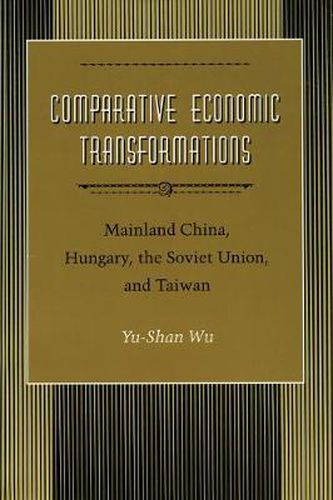Readings Newsletter
Become a Readings Member to make your shopping experience even easier.
Sign in or sign up for free!
You’re not far away from qualifying for FREE standard shipping within Australia
You’ve qualified for FREE standard shipping within Australia
The cart is loading…






This pathbreaking study illuminates the problems of economic liberalisation in authoritarian, command-economy states. It demonstrates that large structural shifts in economic policy can usefully be viewed in terms of two variables - the degree of state ownership of property, and the degree of state control of that property. Using this property rights framework, the author provides a richly detailed comparison of shifts towards ‘market socialism’ (state ownership without state control) in the People’s Republic of China in the 1980s, the Soviet Union in the 1920s, and Hungary in the 1960s and 70s. He also looks at Taiwan’s development of ‘state capitalism’ (private ownership with state control) in the 1950s and 60s. The book explains what factors prompt an authoritarian regime to launch reforms and, in the process, yields many insights into factors that divert the course of change.
$9.00 standard shipping within Australia
FREE standard shipping within Australia for orders over $100.00
Express & International shipping calculated at checkout
This pathbreaking study illuminates the problems of economic liberalisation in authoritarian, command-economy states. It demonstrates that large structural shifts in economic policy can usefully be viewed in terms of two variables - the degree of state ownership of property, and the degree of state control of that property. Using this property rights framework, the author provides a richly detailed comparison of shifts towards ‘market socialism’ (state ownership without state control) in the People’s Republic of China in the 1980s, the Soviet Union in the 1920s, and Hungary in the 1960s and 70s. He also looks at Taiwan’s development of ‘state capitalism’ (private ownership with state control) in the 1950s and 60s. The book explains what factors prompt an authoritarian regime to launch reforms and, in the process, yields many insights into factors that divert the course of change.